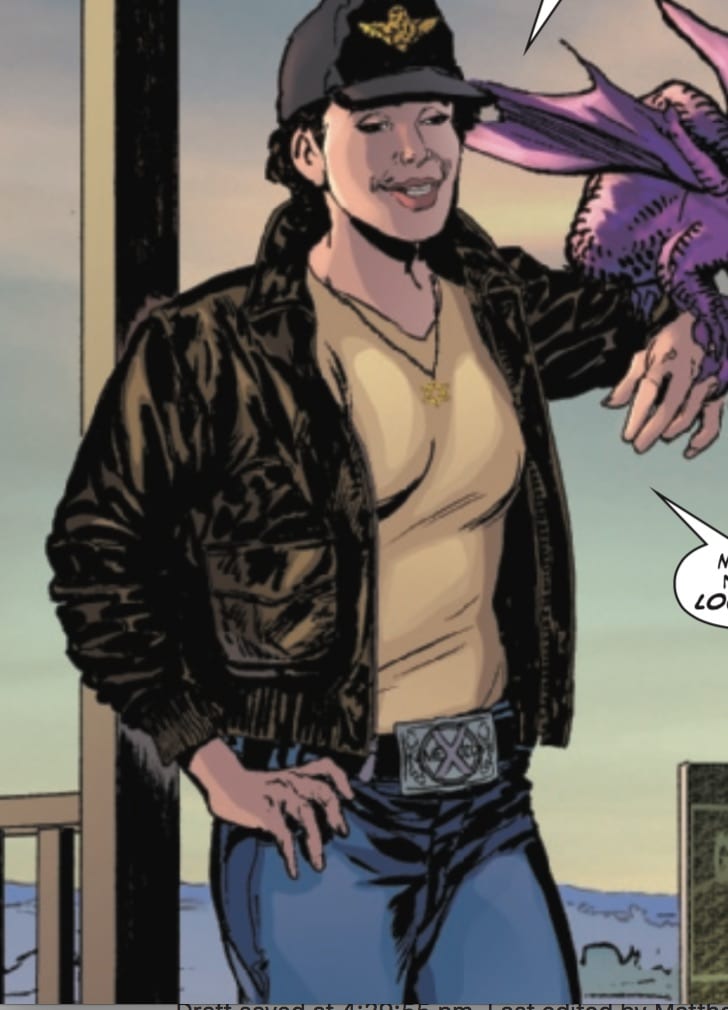X-Men: God Loves, Man Kills is considered a classic X-Men story. Originally published in 1983, and the fifth graphic novel to be released by Marvel Comics, writer Chris Claremont, along with artist Brent Anderson, colorist Steve Oliff, and letterer Tom Orzechowski’s classic X-Men tale (which inspired the movie X-Men 2) tells the story of the Reverend William Stryker, a fundamentalist television preacher who believes mutants are an abomination that God wants to strike from the Earth. With his militant Purifiers, he hunts, kills, and kidnaps various mutants, including members of the X-Men, for that purpose.
On July 8, Marvel Comics released part one of two of an Extended Cut of this classic story, with a new framing device (by Claremont and Anderson) that draws on one of Claremont’s more modern X-tales, X-Men Black: Magneto, a one-shot released in 2018, in which Magneto meets and befriends a young human girl named Kate.
Writing
X-Men: God Loves, Man Kills is indeed a classic tale, and while it suffers from some of the tropes of older comic books, like an overuse of narration, I still found my re-reading of the original version to be relevant to some of the conversations happening in today’s world around issues relating to marginal communities and religious fundamentalism.
The weight of this review, however, falls on the “extended cut” part of this issue, featuring new material from Claremont wherein Kitty Pryde visits Kate, the aforementioned human girl from X-Men Black: Magneto, to talk about how adults are stuck in the nightmare of the lives they’ve made, and kids have hope for the future…something like that. Honestly, it’s a bit contrived. It serves merely as a framing device for Kitty to tell a story about her younger years in the X-Men and her experience working with Magneto in God Loves, Man Kills.
I certainly hope the back end of the framing sequences redeems my attitude here, but for an extended cut, this framing sequence doesn’t really add anything to the original story. In fact, it might take away from it if this extended cut had been about Claremont and company adding in or fleshing out scenes they had wanted more room to add, that would’ve been one thing. As it stands, this extended cut reminds me of the first half of the animated version of Batman: The Killing Joke, adding an unnecessary sequence that in no way helps the original tale.
One thing I can commend about the writing here is the backmatter, which has interviews about the extended cut from Claremont and Anderson. Their insights into the original genesis of the story will be enjoyable to longtime X-Men fans!
Art
Anderson admits in the backmatter interview that he can’t really control whether or not the art for the framing sequence matches the original issue but that he tries to put just as much heart in it. And it is certainly at variance with the original. Where the original story had the addition of Steve Oliff’s brush strokes which gave the colors a painted canvas look (I believe Anderson in the backmatter actually talks about the unique coloring process for the original graphic novel), the colors in the new framing desire are a bit flat and digitized.
The character designs, especially for Kitty, are quite awkward looking.

Kitty consistently looks like she’s 40 throughout this sequence. Not that there’s anything wrong with being 40. And it isn’t that Kitty hasn’t grown up. But she is still a young adult. I’m not sure if Anderson’s design for her here really captures that.
The lettering is serviceable for this sequence, but I was left wondering, again, if this sequence even needed to exist.
I deeply enjoyed X-Men: God Loves, Man Kills, and to the extent that this book contains that original story, it’s great, and I’m glad new readers might get exposed to it through this issue. As an “extended cut,” however, I find the additional framing sequence unnecessary. Neither the story nor the art adds anything to the original graphic novel. Claremont aficionados may enjoy seeing Claremont tie the graphic novel into one of his more recent works, but beyond that, I don’t think the new framing sequence will be that enjoyable for most readers. My ratings for this book should be understood as not applying to the original story, but specifically to this framing sequence and the very need for having “an extended cut.”
What did you think of the X-Men: God Loves, Man Kills – Extended Cut #1? Tell us in the comments below!

